Every pizza display case tells a story. The strategist knew that very well. From the signage to the slicers to the arrangement of the Parmesan and red pepper flake shakers, no visual cue could be left to chance, especially for this client: a 20-unit New York style pizza chain headquartered in San Diego. The CEO was very proud of the organic nature of his restaurants’ interiors, and the lack of “chaininess” to them.
Advertisement
Six different pizzas now rested on burnished metal stands, intermittently punctuated with an assortment of calzones, stromboli, salads, and beverages. It had taken three weeks of recipe testing to bake pizzas this good. For every perfect, client-ready pizza, there were at least six that missed the mark—crusts that weren’t crispy, mozzarella that didn’t stretch, pepperoni that curled when cast in the oven, pockmarking the pie with tiny buckets of grease. (I was a beneficiary of the process. An arsenal of failed recipe prototypes was accumulating in my freezer.)The strategist carefully removed a stack of miniature chalkboards from her desk. On each one, she inscribed the name of a different pie: The Triboro (meat lover’s). The Whitestone (white pie). The Bronx (everything but the kitchen sink). New York’s exalted status in the pizza universe was essential to this client’s identity, so much that the client had even implemented a reverse osmosis system in the dough-making process to replicate the pH balance of New York water.When the set up was complete, the strategist called over the head of the agency to evaluate her work.He gingerly touched one of the pizza stands, marveling at its sturdiness. “Here are my thoughts on the stromboli. There’s too much dough overlap; the ends should barely be touching on top. Plus it looks too constricted on these round pizza trays. Do we have another option? A rectangular tray with a lip?”
Advertisement
“Yes,” the strategist answered. “That’s an operational solve.”“Let’s go with the smaller carafes for the wine,” he continued, studying the last third of the display. “We don’t want to mislead guests with the portioning.”When he reached the end, he folded his arms and furrowed his eyebrows.“These IPAs feel like it’s raining and I’m in Portland. What’s a signature New York City beer? Something you might find at a neighborhood place?”“Brooklyn Lager?” the strategist asked.“What about Blue Point?” I piped up from the other side of the room. “It’s a little edgier.”I hoped he didn’t sense the sarcasm in my voice. As much as I enjoyed the perks of the job (free pizza), working at the agency had been a mixed bag. I had spent nearly eight years in grad school analyzing the politics of 18th-century venison feasting, and here I was, Googling high-res images of French-fry containers before I could leave for the day. Still, it was better than adjuncting at a third-rate university somewhere. I counted my blessings.The head of the agency didn’t notice my exasperation.“Great,” he said. “Let’s make sure we pick up a few before the tasting tomorrow.”
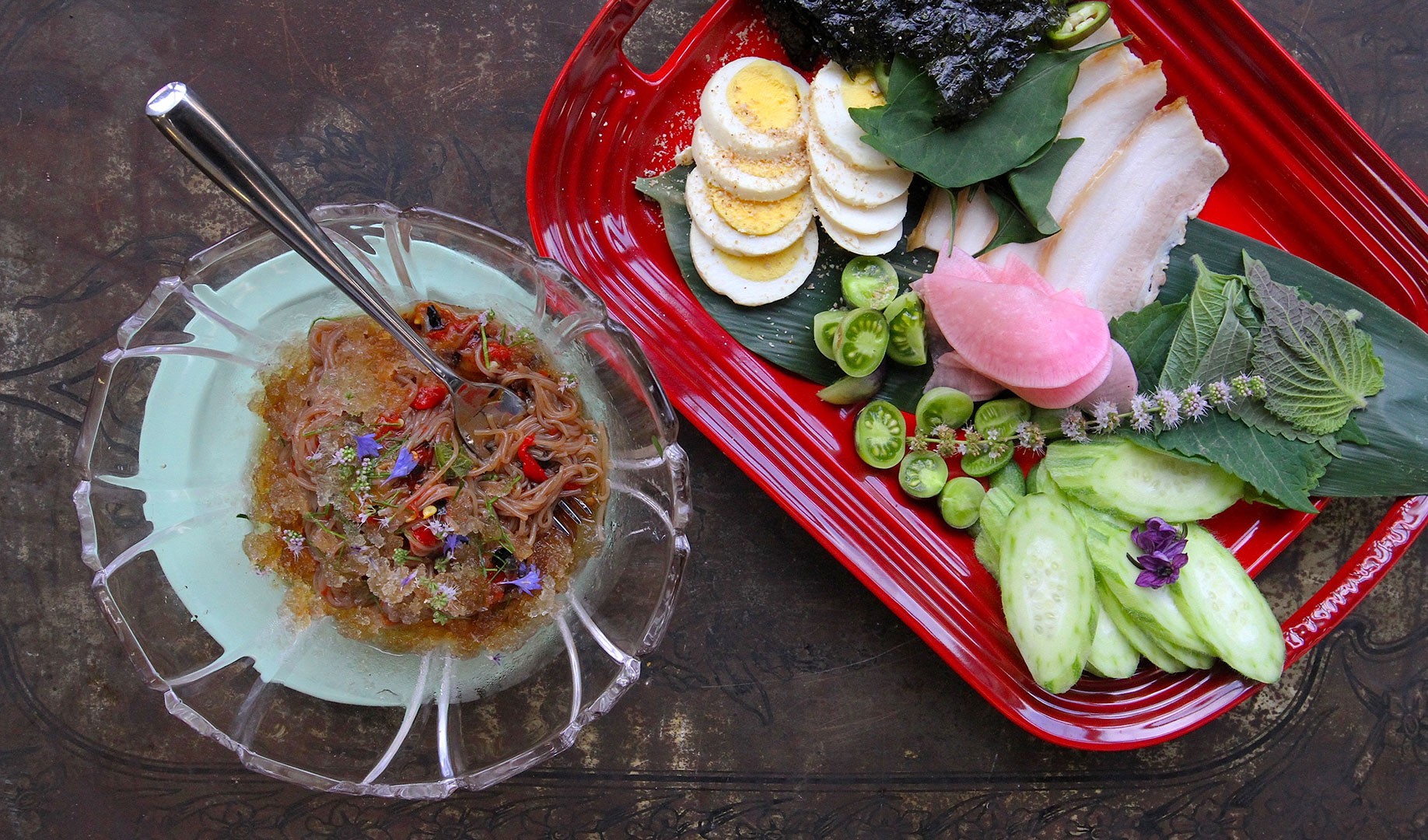
It’s a recent development that things like pizza and chicken wraps have warranted the attention of professional strategy firms. Until about 20 years ago, chain restaurants inhabited a simpler world. On one end, there was the no-frills quick service restaurant (QSR) model that dealt in simple takeout items like burgers and fries. On the other end, the full-service “casual dining” and “family dining” models that came of age in the 70s and 80s.

It’s a recent development that things like pizza and chicken wraps have warranted the attention of professional strategy firms. Until about 20 years ago, chain restaurants inhabited a simpler world. On one end, there was the no-frills quick service restaurant (QSR) model that dealt in simple takeout items like burgers and fries. On the other end, the full-service “casual dining” and “family dining” models that came of age in the 70s and 80s.
Advertisement
The rise of the “fast casual” segment during the late 90s and early 2000s—the Chipotles, Paneras, and Shake Shacks of the world—shook the status quo. Offering higher-quality food and atmosphere without the operational burdens of a full-service restaurant, fast casual restaurants are both products and drivers of changing culinary expectations. We want convenience, but we also want to feel good about where our food is coming from. We want to indulge, but we want healthy options. We want variety, but we want it everywhere, on demand, and at a reasonable price. Even legacy chains like Applebee’s and Sizzler now must have a point of view on things like wellness and sustainability and community engagement if they wish to keep investors happy.Restaurant consultants respond to these issues. Working with food businesses of various kinds—from sandwich shops to movie-theaters to pretzel stands at the mall—consultants seek to make their clients’ food more compelling and user-friendly. Armed with whiteboards, buzzwords, mind-maps, and rainbow colored Post-its, consultants apply the well-worn tenets of design thinking—empathizing, ideating, prototyping and so on—to America’s restaurant landscape. They research trends, write menus, and develop recipes. They price ingredients, design kitchens, and source packaging. They concern themselves with all the small logistical details that can make or break a concept.
Advertisement
Appetizers or accompaniments? Separate entrees or combination meals? Should menus be customizable—letting guests build a meal from the ground up—or curated, which feels more premium and ‘chef-driven?’With in-house innovation and marketing departments, most chains don’t need restaurant consultants. Still, clients came to us with dozens of problems. Some had an idea for a new product line (breakfast tacos, seasonal smoothies) that they wished to benchmark against a new set of palates. Some wanted to break into office catering but didn’t know where to begin. Some weren’t even technically restaurants, such as the pay-by-the-hour workspace that wanted to keep customers on the premises. Still others hired us as a last resort. These were the chains circling the drain, bordering on irrelevance, caught in the throes of an identity crisis. We called this kind of project a “concept revitalization.”
One client came to us with a familiar story. The 200-unit, Arizona-based fast casual restaurant had commissioned a lot of expensive reports from a lot of expensive market research firms, but none of them were helping. The menu was dated, ordering was confusing, guests were aging, and sales were down.“Guests consistently rate us for higher-quality food, more flavorful food, and higher reorder intent than Panda Express,” the CEO told us. He was a lanky, sandy-haired guy with a Southern drawl who had cut his teeth working 20 years in the fried chicken industry. The comparison to Panda Express was telling; after all, we all knew that Panda wasn’t a real fast casual at all. Panda didn’t use premium ingredients, its food was “batched” rather than made to order, and guests ordered via a utilitarian ‘point and shoot’ style of service.
Advertisement
“But I’ll admit it,” the CEO confessed. “I’m envious of their same-store sales.”Every project that our agency undertook began with the “Define Phase,” which culminated in a lengthy face-to-face client interview in order to better understand their goals. These meetings often felt like extended therapy sessions. We asked about past successes and failures: Why did this partnership end? How much money do you waste throwing out wine each night? We asked about the kinds of changes they would be willing to consider: Investing in new equipment? More time for ingredient prep? Above all, the Define Phase was intended to create common language with the client, which wasn’t always easy. Every restaurant executive used a different vocabulary.“In order to differentiate our brand from Panda, “ the CEO continued, “the board has voted to adopt a ‘lighter, brighter, and fresher’ menu and brand positioning.”“We use an acronym in the office,” the CMO chimed in. “Let’s ‘LBF it’!”“Now let me ask one thing,” interjected our fast-talking client manager. Short and self-assured, with a penchant for carbon-fiber road bikes and closetful of custom European-style blazers, the manager had a particular way of posing questions, where he’d cock his head to one side, slow down his speech, and over-enunciate each word. “Is there any item on today’s menu that represents the new direction that you want to go?”The executives looked at each other. “Caramel Chicken,” they said.
Advertisement
The manager nodded knowingly. Caramel Chicken had been developed by our agency five years earlier, as one of its first projects. It wasn’t the highest-grossing dish, but it scored surprisingly well on guest satisfaction surveys; after reading over 12,000 lines of guest comments, the CEO informed us, many rated it their favorite dish. Given the latest industry research on the adaptation of Asian food into the American mass-market—the steady acculturation of pho, the cautious courtship with fermentation, the brash machismo of the mash-up genre kick-started by the Korean taco—it wasn’t hard to see why. On a menu laden with familiar one-note flavors (sweet and sour pork, Mongolian beef) dressed up with little more than a few peanuts and carrot coins, Caramel Chicken (in spite of its saccharine-sounding name) was the only entrée with any fresh vegetables: a “slaw” of carrots, red peppers, pineapple, and cilantro.Most importantly, Caramel Chicken was believed to resonate with the client’s target customer: the “female healthy living guest, aged 24-39.” Educated, discerning, perhaps married, perhaps not, studies had shown this guest to value freshness over indulgence, surprise over authenticity, craft over convenience, nutrients over calories. She was a true enigma. Marketing gurus had tried to woo her by adding brown rice and sushi to the menu, but she abided by her own moral economy. Worse, changing the menu to serve her capricious desires risked alienating the chain’s older, more conservative patrons. That was the rub. We had heard about guests laying siege to a restaurant, demolishing c-suites and stock valuations because prices were raised, a favorite dish was removed, or a beef patty was reduced so much as one ounce in weight.
Advertisement
We had our work cut out for us.
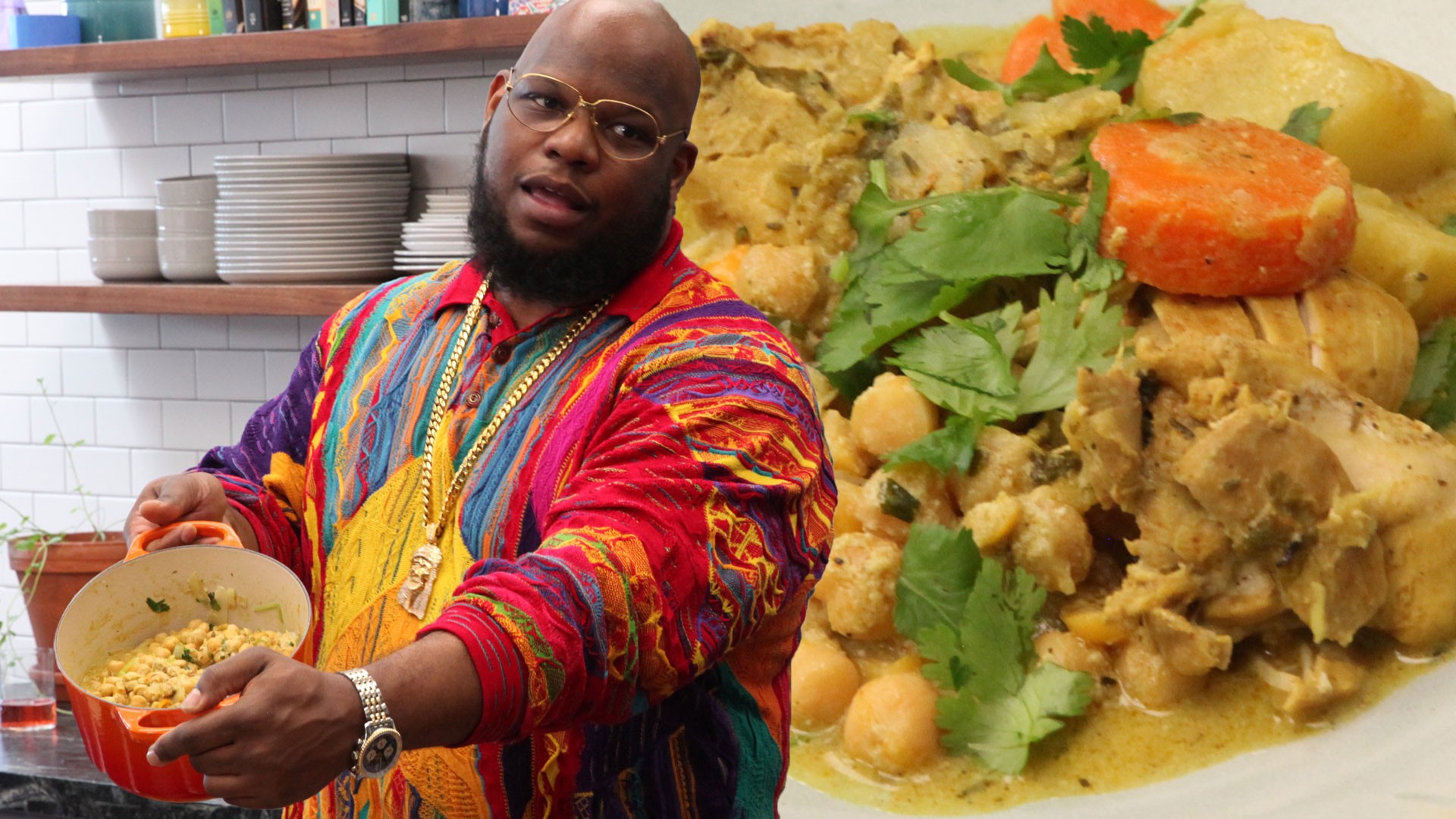
If the “Define Phase” clarified the client’s vision, the “Identify Phase” dove into the weeds. Identify was a hard and honest look at a chain’s strengths and weaknesses, beginning with an on-site “immersion” within one or more of the client’s restaurants. We would inspect the pantry, the equipment, and count the number of hand movements utilized on the cooking line. We would order every item on the menu, evaluating the flavor and presentation of each dish. We would sit in the restaurant for hours and observe the guests’ behavior: when they arrived and with whom, what they ordered, how they ate, how long they stuck around.In this case, there were red flags everywhere. The concept was styled as a “Pan-Asian Diner,” but the menu mostly skewed Chinese. (Even the Pad Thai was so overloaded with soy sauce that it was frequently mistaken for soggy chow mein.) The suppliers were paying a premium for perfectly symmetrical A-grade oranges just for the cooks to grate some rind on the chicken and throw the rest away. The cooks were butchering their own meat and hand-rolling their own dumplings, but they weren’t getting any credit for it—none of this labor was mentioned on the menu, nor was it suggested by the homely plating techniques.Back at the office, our team pooled our observations on multicolored sticky notes that we stuck to a giant whiteboard.“Dishes have no freshness cues.”
“Plating presentations are not conducive to sharing.”
“Pad Thai entrée does not adhere to standard of identity.”
“Naming conventions are dated.”

If the “Define Phase” clarified the client’s vision, the “Identify Phase” dove into the weeds. Identify was a hard and honest look at a chain’s strengths and weaknesses, beginning with an on-site “immersion” within one or more of the client’s restaurants. We would inspect the pantry, the equipment, and count the number of hand movements utilized on the cooking line. We would order every item on the menu, evaluating the flavor and presentation of each dish. We would sit in the restaurant for hours and observe the guests’ behavior: when they arrived and with whom, what they ordered, how they ate, how long they stuck around.In this case, there were red flags everywhere. The concept was styled as a “Pan-Asian Diner,” but the menu mostly skewed Chinese. (Even the Pad Thai was so overloaded with soy sauce that it was frequently mistaken for soggy chow mein.) The suppliers were paying a premium for perfectly symmetrical A-grade oranges just for the cooks to grate some rind on the chicken and throw the rest away. The cooks were butchering their own meat and hand-rolling their own dumplings, but they weren’t getting any credit for it—none of this labor was mentioned on the menu, nor was it suggested by the homely plating techniques.Back at the office, our team pooled our observations on multicolored sticky notes that we stuck to a giant whiteboard.“Dishes have no freshness cues.”
“Plating presentations are not conducive to sharing.”
“Pad Thai entrée does not adhere to standard of identity.”
“Naming conventions are dated.”
Advertisement
“They keep talking about this younger, female, healthy living guest,” the manager wailed, pounding his fist on the table. “But where are the hip moms? Where are the yoga pants?"To answer these questions, we designed a tour: a carefully researched survey of the latest food and design trends percolating through the major cities. This time, we visited 12 restaurants in two days, which was modest by our agency’s standards. Sometimes we got up to 30.At the second stop, the CEO tentatively fingered a five-spice tofu ssam wrap with a large, wrinkled hand. “I love this wrapper—what is it made of, rice paper? Something about it being clear makes it feel healthy.”The manager nodded vigorously in agreement. “Now look at this dish,” he said, calling our attention to a neighboring rice noodle bowl. “You’ve got your contemporary proteins: not sauced, but marinated and then grilled.”The executives peered at a slab of crusted steak, carefully sliced to reveal four pink, tender middles. “Notice the cucumber salad for that refreshing element, and the crispy shallots for texture,” the manager continued. “Sour stuff. Pickled elements. Five different flavor systems built into one package. But the guest gets to choose how she wants to experience them.”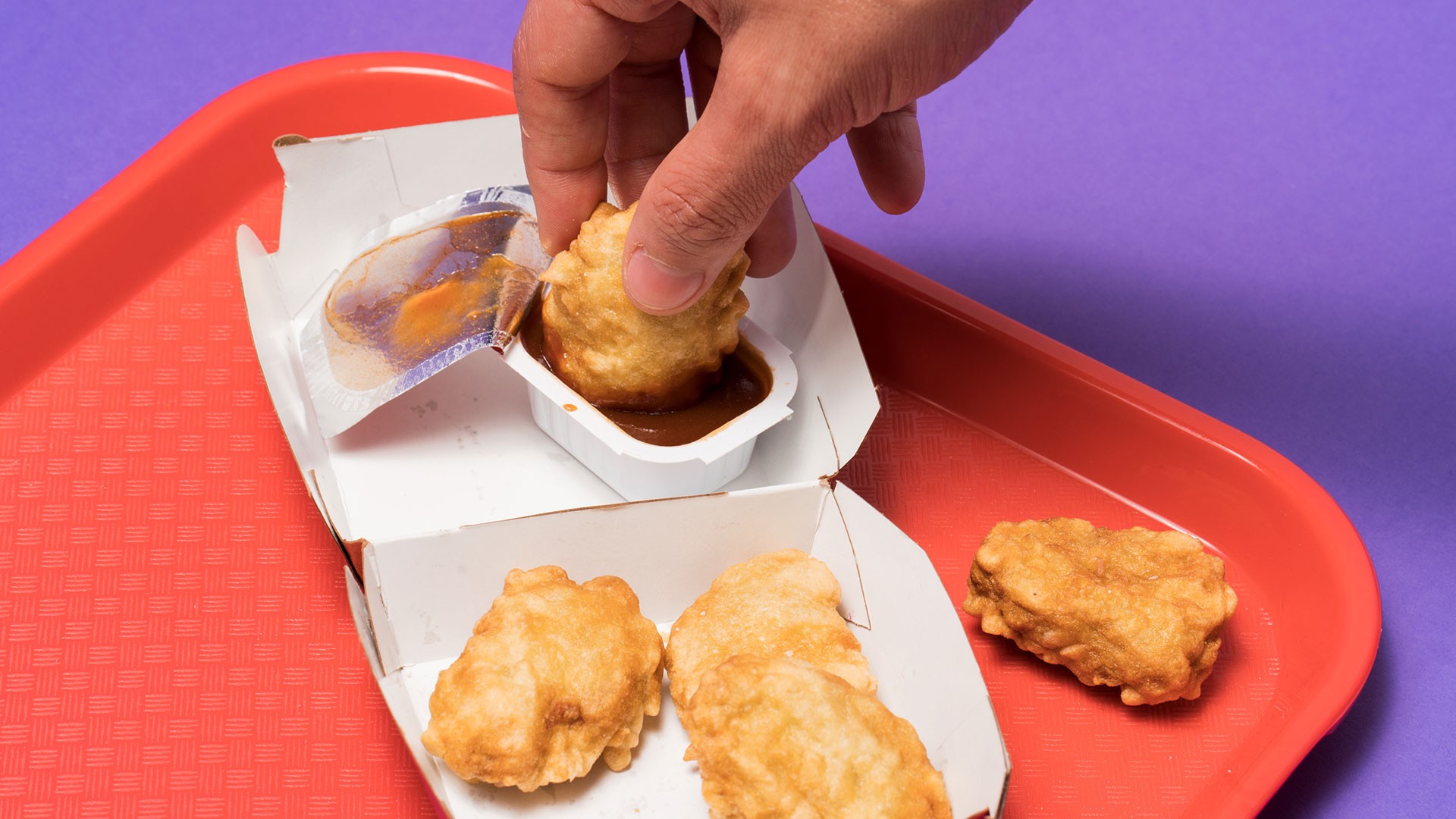 Captivated by his own words, the manager dramatically gestured to the thronged seating area. “Look around this place,” he marveled. “They’re using heavy silverware. Ceramic bowls instead of melamine. Listing the specials with a chalkboard instead of a digital menu: giving us the daily ‘news.’ We’ve got to harness some of this at your restaurants. We’ve got to deliver a ‘fine casual’ experience.”
Captivated by his own words, the manager dramatically gestured to the thronged seating area. “Look around this place,” he marveled. “They’re using heavy silverware. Ceramic bowls instead of melamine. Listing the specials with a chalkboard instead of a digital menu: giving us the daily ‘news.’ We’ve got to harness some of this at your restaurants. We’ve got to deliver a ‘fine casual’ experience.”

Advertisement
The CEO looked down. “When I hear the word ‘fine casual,’ I think of lower user frequency,” he murmured in his slow Southern drawl. “And that makes me very nervous.”The Identify Phase culminated in an 80-slide deck that used the information gleaned from the immersion and tour to provide the client a series of guidelines.Embrace a broader definition of Asian.
Be a poster child for “clean” Asian.
Simplify menu navigation.
Be sympathetic to the solo diner.
Evolve beyond the traditional Asian health halo.The CEO was unsatisfied. He was chomping at the bit for the new menu, and not a single new dish had been presented. I noticed a nervous twinge in his voice during the feedback call.We urged him to be patient. The menu would come.
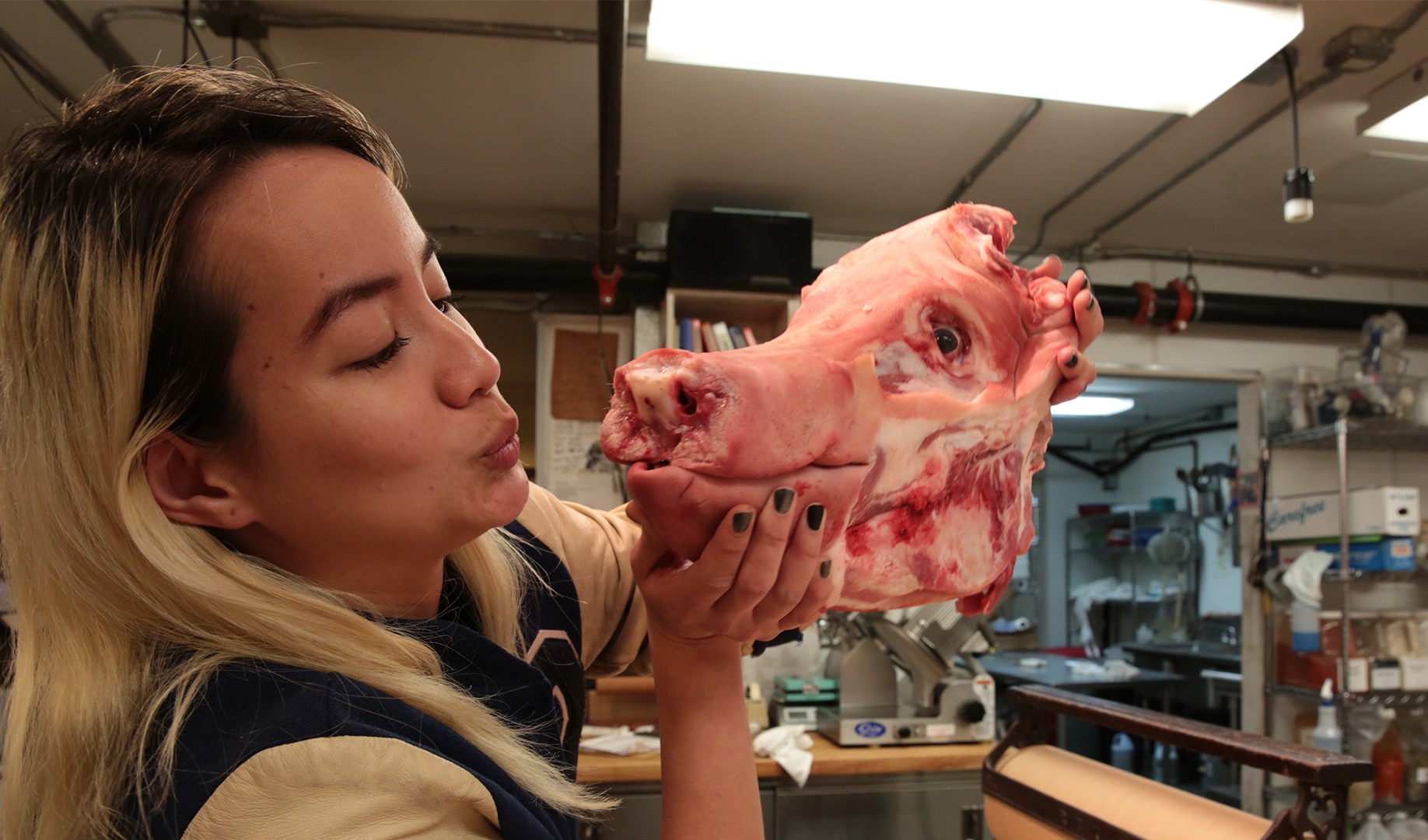
The language of restaurant consulting is a cold, dry, semi-clinical thing. We talk about the menu as an “offering,” eating periods are divided into “dayparts,” chicken and steak are lumped together as “proteins,” rye bread and lettuce cups are “carriers.” “Fresh finishes” and “textural value-adds” make a dish camera ready. Writing a new menu—the purpose of the Create Phase—relied on this lingo.But the highest compliment you could ever pay a chain is to call its food “craveable.” It was a word we threw around in the office a lot, and everyone had a different definition: “Taste sensations.” “Umami bombs.” “Food you can’t stop eating.” “Flavor orgasms.” Craveability inhered in crispy bacon, the ether of truffle oil, the way that the caramelized exterior of a kouign amann crumbled and melted in the heat of one’s mouth, succumbing to the buttery softness underneath.
Be a poster child for “clean” Asian.
Simplify menu navigation.
Be sympathetic to the solo diner.
Evolve beyond the traditional Asian health halo.The CEO was unsatisfied. He was chomping at the bit for the new menu, and not a single new dish had been presented. I noticed a nervous twinge in his voice during the feedback call.We urged him to be patient. The menu would come.

The language of restaurant consulting is a cold, dry, semi-clinical thing. We talk about the menu as an “offering,” eating periods are divided into “dayparts,” chicken and steak are lumped together as “proteins,” rye bread and lettuce cups are “carriers.” “Fresh finishes” and “textural value-adds” make a dish camera ready. Writing a new menu—the purpose of the Create Phase—relied on this lingo.But the highest compliment you could ever pay a chain is to call its food “craveable.” It was a word we threw around in the office a lot, and everyone had a different definition: “Taste sensations.” “Umami bombs.” “Food you can’t stop eating.” “Flavor orgasms.” Craveability inhered in crispy bacon, the ether of truffle oil, the way that the caramelized exterior of a kouign amann crumbled and melted in the heat of one’s mouth, succumbing to the buttery softness underneath.
Advertisement
If craveability fueled the appetite, empathy coded the experience. An “empathetic menu” allowed the businessman a quick start to his day; the mom to feed her kids something she felt good about; the college student to nurse his hangover; the teenager an Instagram story. Serving food in a bowl instead of a plate was empathetic because it felt warm and nourishing and pleasantly symmetrical, like being back inside the womb. Even putting General Tso’s chicken on a menu was empathetic because it was many Americans’ first experience with what they believed to be “Chinese” food, and in its rich and unctuous flavors, we were assured that everything would be okay.The menu copy was the last consideration. This was a strange exercise in verbal gymnastics that carefully calibrated all the work the kitchen wants you to know it is doing back of house—the slow-braising, char-grilling, hand-rolling, and wok-searing—and the fickle status aspirations of the diner. Every word mattered. “Nori rolls” sounded more sophisticated than “sushi rolls” but could dissuade the conservative guest. The word “pork” was a death knell in the fast casual segment, but consumers responded positively to bacon (or, even better, carnitas). Menu item descriptions must be “signature” and “ownable,” evoking inside jokes, local farms, tropical islands, romantic regrets.
The “Develop Phase” was when the rubber hit the road: a formidable process of ingredient sourcing, costing, and recipe development. Equipment was installed, R&D chefs got to work, and internal tastings occurred at a breakneck pace, leaving dozens of under-powered power bowls and overcooked crab rangoons in the conference room for the office to scavenge. “Commit to iteration,” the manager liked to say. Even if we decided to offer street tacos or spring rolls on a client’s menu, there were a zillion ways to sauce the proteins, sauté the vegetables, and plate and package them for takeout.
Advertisement
All of this work led up to “the showing:” a carefully choreographed tasting of the dishes our test kitchen had developed. The showing was a moment of great anticipation for the entire agency; we’d always look for reasons to walk by the conference room, hoping to decipher the clients’ muted gestures and facial expressions behind the thick glass walls. Occasionally I would help out with the hospitality duties such as distributing forks and refilling water glasses. Sometimes I would overhear fragments of the conversation when I came in to bus the used spit cups.
“Asian food no longer has a health halo merely by existing,” the manager explained as I cleared away plates of mangled spring rolls. “The once ‘healthy’ perceptions of brown rice and lettuce cups aren’t believable anymore. Today, guests are linking health to nutrient density. Ancient grains. Avocado. Micro-greens.”That was my cue to debut the edamame hummus, plated in sleek shallow bowls ringed with vegetable sticks and wonton chips. I placed one pristine version on the center of the table—intended for viewing purposes—before distributing smaller, separate portions for the seven tasters.“This is our spin on the classic, shareable ‘chip and dip’ play,” the manager continued gleefully. “It’s a departure from the old menu, but we’re confident that this dish is directionally correct, at the very least.” He struck a wonton chip against an imaginary drum for emphasis. “It’s more playful.”
Advertisement
His associate nodded earnestly. “We saw this over and over again in the market research. More and more Asian ingredients are making their way into non-Asian concepts. Hell, even Bobby Flay is using kimchi in his meatloaf!”“But it still hammers in that classic association between Asian food and health.”“Right. Edamame hummus isn’t a subtractive experience,” his associate agreed. “It’s still craveable, but the guest thinks she’s doing something good for herself.”Everyone at the agency knew it was important to eat before the showing, and then to take only one bite of each dish. With up to 20 dishes served over three or four hours, the event was a truly marathon. The clients weren’t always so savvy.
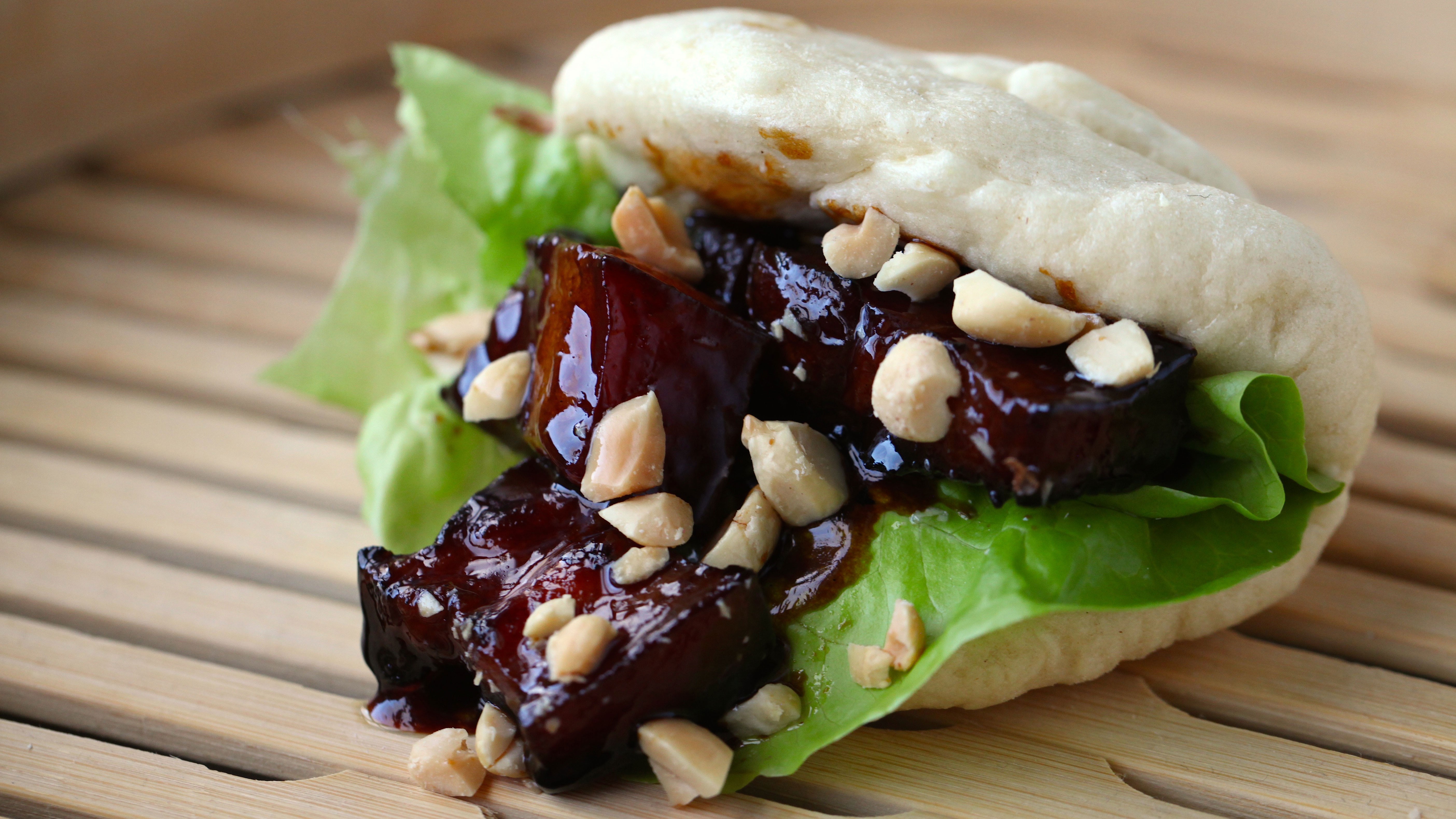
We were in the business of “menu evolution,” but evolving a menu is tricky work. It means digging through the bric-a-brac, seeking out the golden nuggets, polishing the surfaces brighter and shinier, even if the outcomes—from the bowls to the garnishes to carefully curated shareable appetizers—turned out to be more similar than different. Nothing’s certain. Sometimes a client would return wanting help with another menu or a line extension or another project of some kind. Sometimes we never heard from them again. It was sort of like casting a toy sailboat into the ocean, and hoping that it would float.As for the client, they’re still trying to get it right. Our agency isn’t in the picture anymore, but every couple of months, I find myself reading about a new menu item that they’ve launched. First it was quinoa (revered for its status as an “ancient grain,” even if it’s never been cultivated in Asia). Then it was poke (to keep up with everybody else, I guess). Most recently, they’ve rekindled their age-old rivalry with Panda Express by rolling out their own, allegedly better version of Panda’s signature dish: orange chicken. Boasting “house-cut,” “tempura-battered,” and “wok-seared” white meat chicken breast served with fresh oranges, the dish (with a whopping 43 grams of sugar) is an obvious return to the client’s Chinese-American roots.But who knows for how long they’ll keep it up. After all, there’s no science behind the secret sauce.
“It’s really believable,” the branding rep chirped, scraping the bottom of her bowl with a wonton chip. “I’d definitely order this for happy hour.”Her enthusiasm didn’t surprise me. The client’s old menu had suffered from a paradox of plenty. It had presented the illusion of choice, while, in reality, nearly every entree was a familiar Chinese-American concoction of syrupy proteins and starchy rice. To solve this problem, we had transformed the old stalwarts—the Kung Pao, Mongolian Beef, and so on—into cosmopolitan “rice bowls” that guests could customize with vegetables and grains. To top it off, we introduced a series of gestures to other Asian cuisines. A salmon-avocado chirashi bowl. A Korean BBQ steak bibimbap. A nod to ramen. A nod to pho. A “family menu” replete with blistered green beans and sesame broccoli. A beverage program that boasted Vietnamese coffee and Thai iced tea.“This menu is taking a big spin,” the CMO heaved at last, weary from four hours of accumulated food smells in the room. “But it does align with the new brand positioning. ‘Lighter, Brighter, Fresher’ is all about embracing health as a lifestyle, not just as an item on the menu.”“What will be the lifespan of this new menu?” the CEO asked. “How long will these new items remain popular?”We didn’t really have an answer. No one ever knows.

We were in the business of “menu evolution,” but evolving a menu is tricky work. It means digging through the bric-a-brac, seeking out the golden nuggets, polishing the surfaces brighter and shinier, even if the outcomes—from the bowls to the garnishes to carefully curated shareable appetizers—turned out to be more similar than different. Nothing’s certain. Sometimes a client would return wanting help with another menu or a line extension or another project of some kind. Sometimes we never heard from them again. It was sort of like casting a toy sailboat into the ocean, and hoping that it would float.As for the client, they’re still trying to get it right. Our agency isn’t in the picture anymore, but every couple of months, I find myself reading about a new menu item that they’ve launched. First it was quinoa (revered for its status as an “ancient grain,” even if it’s never been cultivated in Asia). Then it was poke (to keep up with everybody else, I guess). Most recently, they’ve rekindled their age-old rivalry with Panda Express by rolling out their own, allegedly better version of Panda’s signature dish: orange chicken. Boasting “house-cut,” “tempura-battered,” and “wok-seared” white meat chicken breast served with fresh oranges, the dish (with a whopping 43 grams of sugar) is an obvious return to the client’s Chinese-American roots.But who knows for how long they’ll keep it up. After all, there’s no science behind the secret sauce.